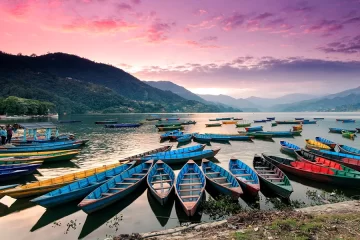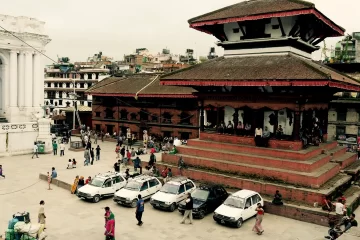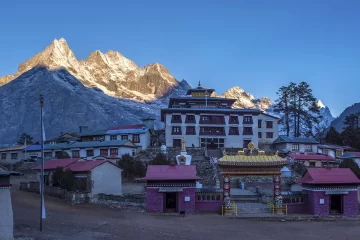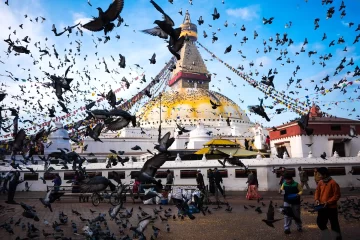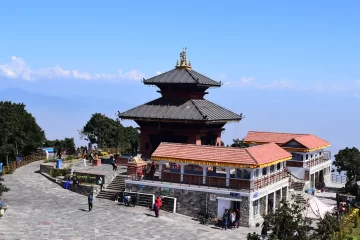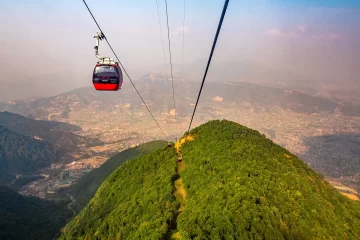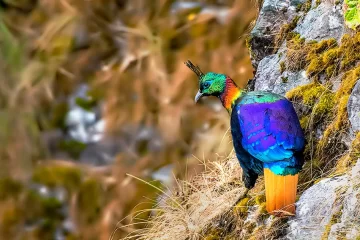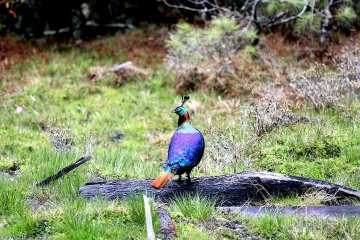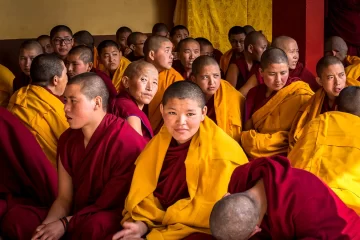Langtang Valley Trek – Discovering the Sacred Monasteries and Beauty of Langtang Valley
Nepal is renowned for its trekking location of different scenic places. Most are challenging, and few are of moderate difficulty. Among them, the Langtang Valley trek is one of Nepal’s moderate and short trekking routes.
Langtang Valley trek is a challenge and an opportunity for the adventurous traveler who seeks to explore this hidden gem of Nepal.
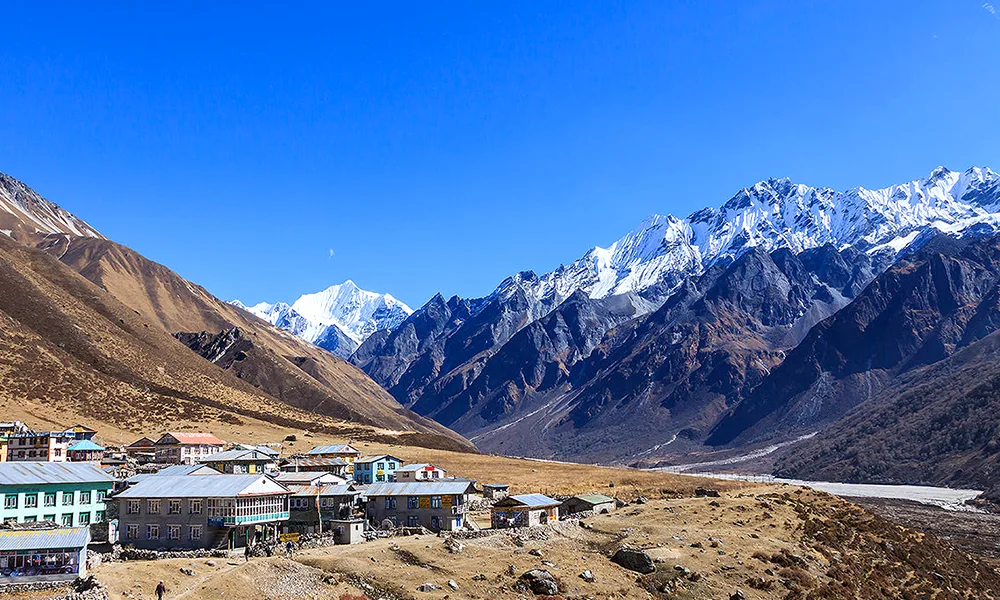
It is a trek that requires stamina and endurance, ascending from 1500m to over 5000m in a span of only a few days. This journey, which can be completed in 7 days, offers the flexibility to extend based on the traveler’s needs, walking ability, and availability of time.
Trekking on this trail is one of the splendid adventures that any trekking enthusiast should plan to go. This location, snuggled between various Himalayan ranges, takes you through gorgeous landscapes that any will be thankful for.
Langtang Valley trek has been attracting thousands of trekkers every year because of its majestic mountains, diverse culture, and breathtaking magnificent sights.
Not only do the grand scenes of mountains captivate, but also the sights and snippets of small waterfalls. The suspension bridges sway gracefully while songbirds serenade the air. Wildflowers bloom in vibrant colors, and the greetings from passersby warm the heart. The local songs and tunes create an enchanting melody, and the hardworking locals embody the spirit of the journey.
All these elements combine to add flavor and depth to your unforgettable adventure. Every angle of the sublime scenes of the Langtang Valley’s hills, rivers, and mountains looks like it has been ripped from a painting.
Highlights of Langtang Valley Trekking
- Relish the beautiful spectacles of Langtang Lirung, Ganesh Himal, and other mountains of the Langtang Himalayan Range
- Breathtaking climb to the vantage point of Tserko Ri lies at an elevation of 5033m.
- Explore the beautiful Tamang villages and get a more in-depth insight into their cultures and heritages
- Experience the attraction of the Tamang villages’ appeal and stunning beauty, offering a fascinating glimpse into their diverse cultures and cherished traditions
- Witness rare birds in Langtang National Park
- Discover the hidden wonders of Kyanjin Gompa
- Try the exquisite dishes of Langtang
Daily Itinerary and Description
Day 1: Arrive in Kathmandu via Tribhuwan International Airport
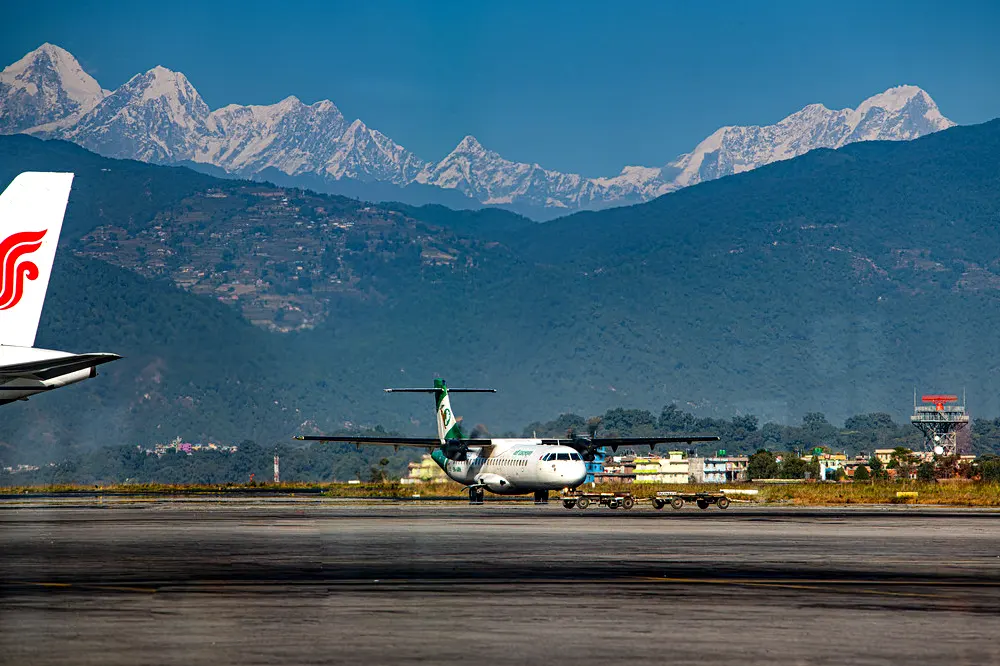
Elevation: 1400 meters
On the first day, you arrive at the city of Kathmandu. You will receive warm welcomes from our team. You can rest and refresh at a comfortable hotel for the day.
Day 2: Sightseeing in Kathmandu
On this day, you can shop for the necessary trekking equipment you might need for the forthcoming days. You will be introduced to your tour and trekking guide and complete some formalities before starting sightseeing around Kathmandu Valley.
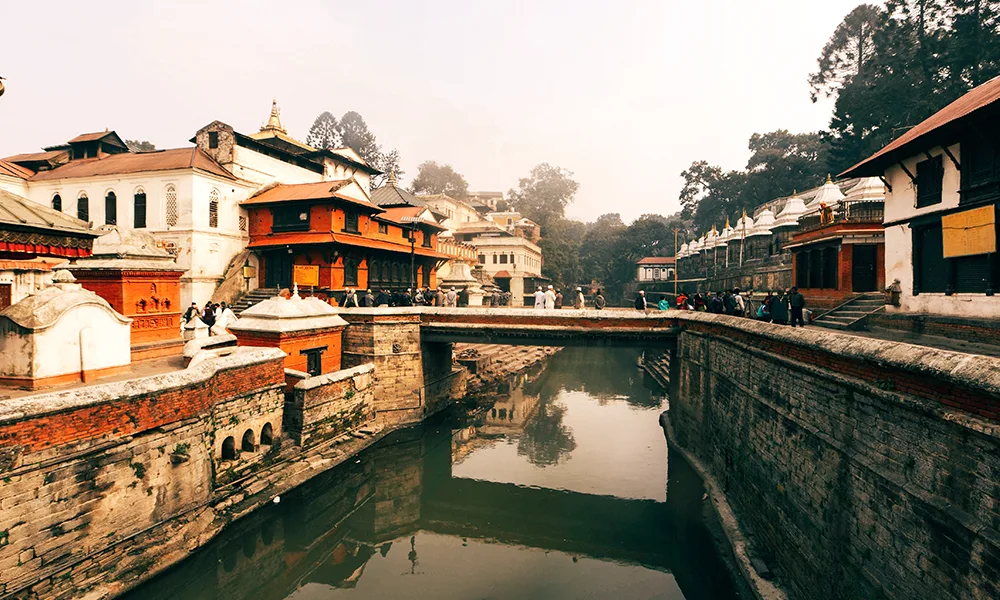
After the necessary work is done, you can explore the ancient city of Kathmandu. You can visit various UNESCO World Heritage Sites, like Pashupatinath, Swayambhunath, and many more.
You could also visit other places. The ancient city sites like Patan Durbar Square and Kathmandu Durbar Square reflect the culture of Kathmandu Valley. You rest in Kathmandu today.
Day 3: Kathmandu to Syabrubesi:
Elevation: 1492 meters
Via tourist bus: 7-9 hours
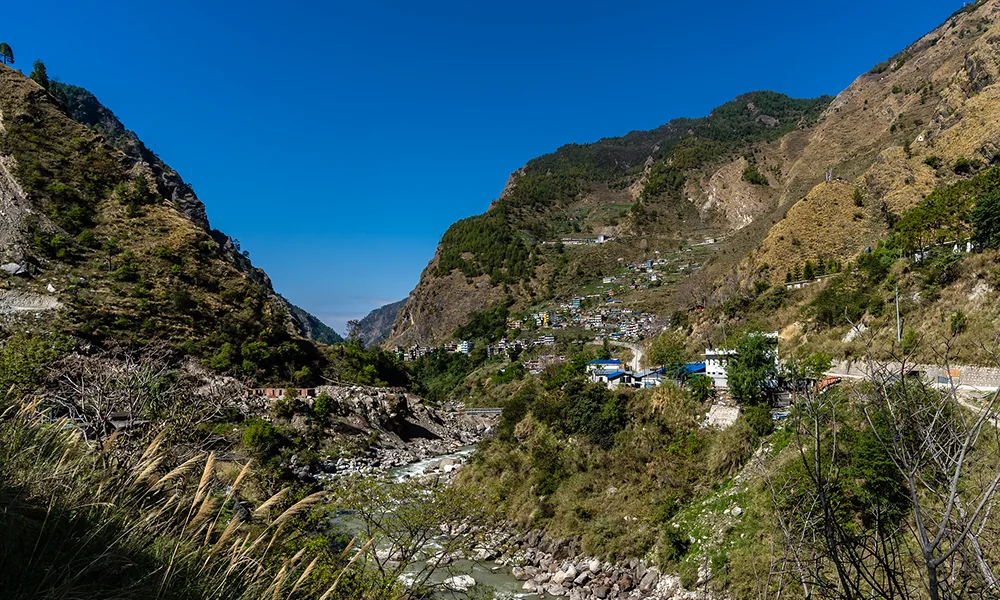
The trek starts from Syabrubesi, 120 km north of Kathmandu. You can travel from Kathmandu through Pasang Lhamu highway following the Trishuli River.
The charm of Trishuli, before starting the trek, will prepare you for your journey. Syabrubesi, though a small town, is rich in its culture and inhabited by the local community of Tamang people.
It lies at the foot of a green hill on the way to Langtang village and is specified as a gateway to Langtang Valley. Spending the first night in Syabrubesi sets the scene, fueling curiosity and anticipation for the coming days.
Day 4: Syabrubesi to Lama Hotel
Elevation: 2447 meters
Walking: 6 hours
The trekking journey starts here. The path is actually within the boundaries of Langtang national park. The trek takes you inside Langtang National Park, established in 1976, to preserve the distinctive natural habitat of Langtang Valley.
Surrounding 1,710 square kilometers, this park is a haven for endangered species such as the red panda, Himalayan black bear, and snow leopard. It also provides a habitat for other remarkable animals like ghoral and serow (goat-antelope) and over 250 species of native birds.
Anyone would admire the rich vegetation of Sal, pine, oak, maple, and various types of rhododendron. While passing through this vegetation-rich park, you might encounter some animals and hear snippets of wild birds singing wild tunes that are bound to awe anyone.
You will end the day at the infamous Lama Hotel. Despite the name suggesting it is just one hotel, it is not a hotel or any building. It is just a major stopping point between Syabrubesi and Langtang village, which was created for tourists in the 1950s. Different teahouses are the only accommodation place as it is situated inside Langtang National Park.
Day 5: Lama Hotel to Langtang village
Elevation: 3500 meters
Walking: 6 hours
The next day, we hiked from the lama hotel to Langtang village. The path is almost about 14 km. The path is steeper and can be difficult. From this point, you can view beautiful snowy shiny mountains with closer inspection.
The road is one single trail along the paths of the river. This path is via Ghoda Tabela, Thyangsyapu, and Chyameki and might take about 4 hours of trekking which may vary due to trekkers’ fitness level, rough terrain, and unpredictable weather.

This day takes you through green hills along the beautiful Langtang Khola. Only your breath can be louder than the roars of the Langtang Khola. The hills are rich in rhododendron if the time of your visit is right, as the national flower of Nepal blooms from early spring to late summer.
After completing the difficult walk, we reach Langtang village for an overnight stay.
Day 6: Langtang village to Kyanjin Gompa 3800m
Elevation: 3800 meters
Walking : 3 hours
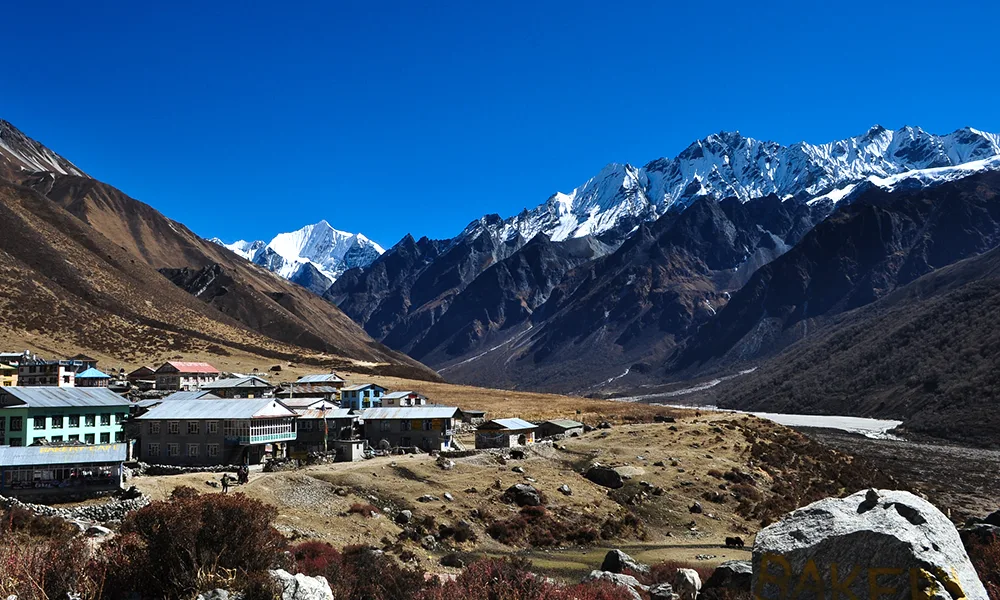
The sixth day’s destination is Kyanjin Gompa. One of the beautiful spots that you stay at is Kyanjin Gompa.
Kyanjin means Camel, and Gompa means ribs; the name of the monastery comes from a local myth that the stone it was built on looks like camel ribs.
The monastery of Kyanjin Gompa is about 280-300 years old.
This monastery, situated over an altitude of 3800 meters, is surrounded by mountains on all sides.
This place feels secluded from the whole world, and the tranquility of this place is unmatched. Sounds of the howling winds and the prayer flags of different colors that flutter create a sense of tranquility and peace.
You will have enough time to explore Kyanjin Gompa for the day. You can visit the local cheese factory where yak cheese is locally made. You can indulge in various cuisines in Kyanjin Gompa.
The cuisine of this place is as equally spectacular as the views here. The staple yet delicious dal bhat is available in any accommodation. Dhindo and Gundruk, Sel roti, yak milk, and Nepalese curd are yummy local foods of Langtang.
You can also try Tibetan Noodle soup (Thukpa) on cold days. Furuala is a popular Tamang dish. It is deep-fried buckwheat flour.
You can also try yak cheese made from locally available yak milk in the cheese factory. Tingmo, a doughy dish made by tying dough and steaming, is tasty as well.
Yak meat is one of the few dishes you may not be able to taste in other places. Local beverages like Himalayan flower tea and butter tea are a must-try for the cold here. Also, available locally-made alcoholic beverages if you are fond of them.
Day 7: Hiking up Tserko Ri and back to Kyanjin Gompa
Elevation: 5033 meters
Walking: 9 -10 hours

You travel to the peak of Tserko Ri, which offers excellent views of the mountains.
As you move on your journey, the steep road takes you to a higher altitude. As you ascend, the landscape changes with less green vegetation and is graced with sceneries of many mountains kissing the sky.
The main highlights of the trek are the mountains. The mere scale of the mountains can make anyone appreciate nature even more. The impressive ruggedness of the peaks and the shiny white mountains can pierce through your soul. In this trek, Tserko Ri offers most of these mountain views.
The ascend to the top of Tserko Ri is hard and long. Taking almost 7 hours of walking is all worth it because you can observe most of the Langtang Himal range as well as Shishapangma mountain (8027 meters) from here.
As you approach, the mountain’s beauty becomes more apparent.
The sunlight dances across its face, illuminating the rugged shape and highlighting the deep crevices.
The air is crisp and fresh, with a faint smell of mists apparent at the location. The Langtang Himal range includes many mountains like Langtang Lirung (7234 m), Langtang Ri (7205 m), Dorje Lakpa (6966 m), Loenpo Gang (6979 m), Changbu (6781 m), Yansa Tsenji (6690 m), Kyunga Ri, (6601 m), Dogpache (6562 m), Langshisha Ri (6427m), Gangchenpo (6387 m), Morimo (6150 m ) and few others.
The impressive character of these mountains and their qualities cannot be overstated. This view is what makes all of your efforts worth it and rewards you for all the hard work you put in throughout this trek.
Despite its intimidating size, the mountain also exudes a sense of serenity and timelessness. It has stood for countless centuries. It has withstood the storms and seasons and watched over the land below with a stoic and unwavering presence.
Day 8: Kyanjin Gompa to Ghoda Tabela
Elevation: 3000m
Walking: 6 hours
From this day, we start retracing our steps through the trails we started our journey. On this day, we start the returning journey through Lama Hotel to Ghoda Tabela, which we skipped in our early trek.
The place is famous for the teahouses and the horse grazing area. Ghoda Tabela translates to “Horse Stable“.
You can find teahouses to stay here. Historically, The village was a resting place for horses and mules carrying goods between the villages in the valley.
Today, the village has basic facilities for trekkers, including teahouses, lodges, and restaurants. The village is an excellent place to stop for the day.
Day 9: Ghoda Tabela to Syabrubesi
Elevation: 1492 meters
Walking: 5 hours
This final trek is a relatively short walk to Syabrubesi. You will walk downhill to the same place where you started the journey. The reach to Syabrubesi marks the end of the Langtang Valley trekking journey. Today you can rest your sore legs and have your deserving rest at the lodge.
Day 10: Return to Kathmandu
Via Tourist Bus: 7-9 hours
The return to Kathmandu will be the same as the third day but with a little bit more sense of achievement. You will have the opportunity to visit previously missed visits to other parts of Kathmandu. Once you reach Kathmandu, we will have a farewell dinner and celebrate your successful trek. Your accommodation for the night will be at a hotel in Kathmandu.
Day 11: Departure
Finally, your trip is over. You will enjoy breakfast at your hotel on the last day of the trek, followed by some free time before leaving.
During the time left, you can pick souvenirs and gifts for your friends and family.
According to your flight time, our team will depart with you, and you’ll be transported to the airport. We hope your journey was pleasurable.
Tips for the Langtang Valley Journey
The midst of spring, i.e., April to June, is ideal for trekking as during this time, the valley receives maximum sunlight and monsoon. Spring season makes the first few days of traveling pleasant as you walk through the green hills.
The smells of rhododendron and wildflowers can be experienced in spring. Another ideal time to visit is at the end of September, October, and November because of the festive season during these times. Those who are fond of snow and cold can visit during the winter.
Supposedly easier than other grand treks like Everest, the Langtang valley trek still is not a walk in the park. It is a test of strength and spirit. It is a journey of discovery and adventure.
Langtang valley trek is more than a hike. It’s a spiritual journey that awakens the senses, enriches the mind and heart, and fosters a deep appreciation for the wonders of creation.
Imprinting lifelong memories, this adventure connects travelers with the ancient mountains, forests, and rivers, forging a closer bond with nature.
